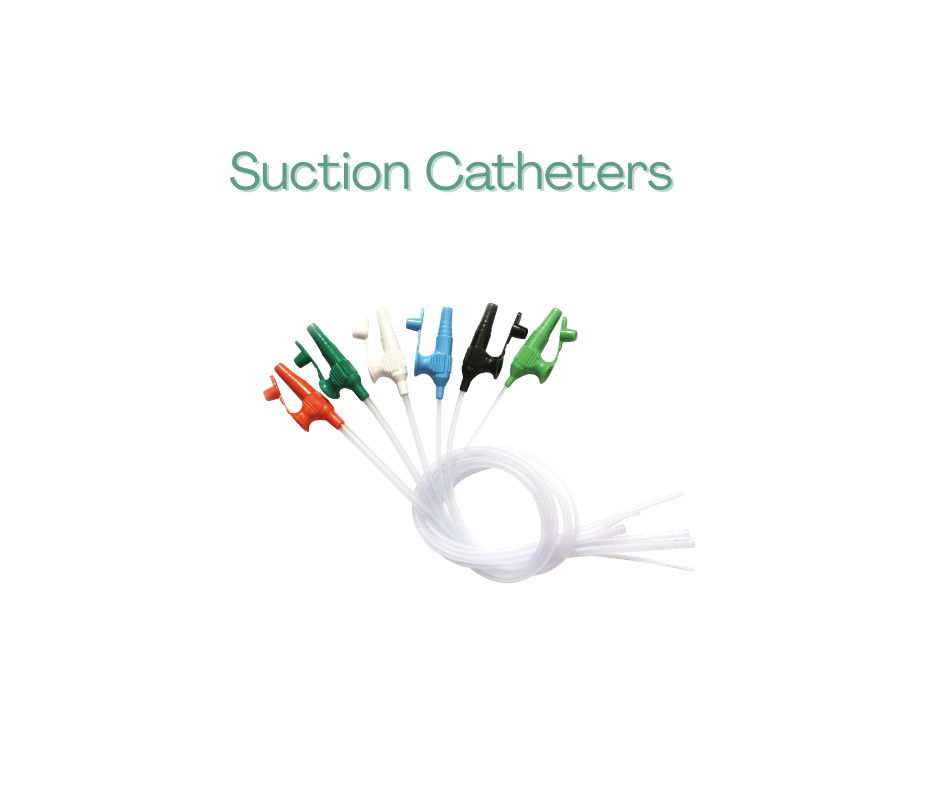TEl: +86-13148388090
Fax:+86-571-88616515
When and How to Use Different Suction Catheters
Author: admin / 2025-08-18Using the right catheter the right way helps patients breathe easily instead of struggling for air. Whether you're stocking a trauma bay, setting up a field hospital, or equipping military medics, knowing when and how to use each type of suction catheter keeps patients safe and airways clear.

Types of Suction Catheters and Key Features
Standard Whistle Tip Suction Catheter
The whistle tip catheter features a side hole (“whistle”) at the distal end. This extra opening:
- Prevents mucosal trauma if the tip lodges against tissue
- Allows continuous flow even during partial occlusion
- Offers moderate rigidity for easy navigation
Whistle tip catheters are versatile in ICU and emergency use, particularly for patients with thick mucus or blood. They are compatible with standard suction devices and are robust enough for repeated field use.
If a soldier suffered facial trauma with significant oral secretions. A whistle tip suction catheter allowed rapid airway clearance without damaging surrounding tissue. The dual side holes ensured the suction force was distributed, preventing excessive negative pressure injuries.
Soft Suction Catheter
The soft suction catheter is made from flexible, medical-grade PVC and is often DEHP-free. Its softness reduces trauma to delicate airways. These catheters are ideal for neonates, infants, and patients with sensitive tissues.
Soft suction catheters excel in low-pressure suction scenarios. The transparency or frosted finish allows caregivers to visually confirm mucus removal. They are also effective in long-term care patients, especially when repeated suctioning is necessary.
DeLee Suction Catheter
The DeLee catheter boasts a wider bore and a curved tip ideal for deep nasopharyngeal suction:
- Angled tip follows natural anatomy
- Larger diameter clears thick secretions rapidly
- Two tiny side holes guard against excessive negative pressure
When a full-term newborn arrives with mild meconium-stained amniotic fluid, immediate airway clearance is critical. Using a DeLee suction catheter, nurses can gently remove fluid from both the nose and mouth. Its narrow diameter and flared tip allow efficient suctioning while minimizing tissue injury, making it ideal for delicate neonatal airways.
When to Choose Each Catheter
Routine Oropharyngeal Clearance
For conscious or semi-conscious patients with light to moderate secretions, the whistle tip catheter excels. Its combination of rigidity and side-hole backup keeps procedures quick and predictable.
Fragile or Pediatric Airways
When mucosal injury would carry serious consequences—neonates, chemotherapy patients, or anyone with coagulopathy—the soft suction catheter is the default. Its gentle material minimizes bleeding and prevents airway irritation.
Thick, Copious Secretions
Patients suffering from heart failure, ARDS, or drowning nearly always present tenacious fluid. The DeLee catheter's large bore and curved tip make it the fastest choice to restore patency, especially in austere or pre-hospital settings.
How to Use Different Suction Catheters
Proper technique is as important as choosing the right catheter. Incorrect usage can lead to airway trauma, infection, or ineffective suction.
Step 1: Assess the Situation
Always evaluate the patient first. Determine the airway obstruction type, patient age, and tissue sensitivity. For neonates, soft or DeLee catheters are preferable. For adults with thick secretions, whistle-tip catheters are more effective.
Step 2: Choose the Right Catheter Size
Catheter size matters. A catheter too large can injure tissue; too small may not clear the airway. Measure against patient anatomy: nasal catheter length should reach the glottis in neonates, while adult oral suction may require longer, more rigid catheters.
Step 3: Prepare for Suctioning
Lubricate if necessary, check suction pressure, and ensure the flange and dual side holes are in place. For example, Bever Medical's catheters have a flared tip to minimize puncture risk and side holes to prevent excessive suction injury.
Step 4: Insert with Care
Insert slowly, following anatomical pathways. Soft catheters should gently slide along the airway without force. DeLee catheters should follow the natural curve of the newborn’s oral and nasal passages. Whistle tip catheters should avoid direct tissue contact to prevent trauma.
Step 5: Suction and Monitor
Apply suction intermittently. Watch for changes in oxygen saturation and patient comfort. Clear mucus visually when using transparent catheters. Adjust depth or catheter type if initial suction is insufficient.
Conclusion
Selecting the right suction catheter—whether a whistle tip suction catheter, soft suction catheter, or DeLee catheter—depends on patient condition, secretion characteristics, and setting. By understanding each type's nuances and following meticulous technique, clinicians can clear airways swiftly, reduce complications, and improve patient outcomes. Plan to equip your facility with premium OEM suction catheters? Contact Bever Medical today to customize your options.


